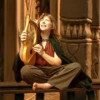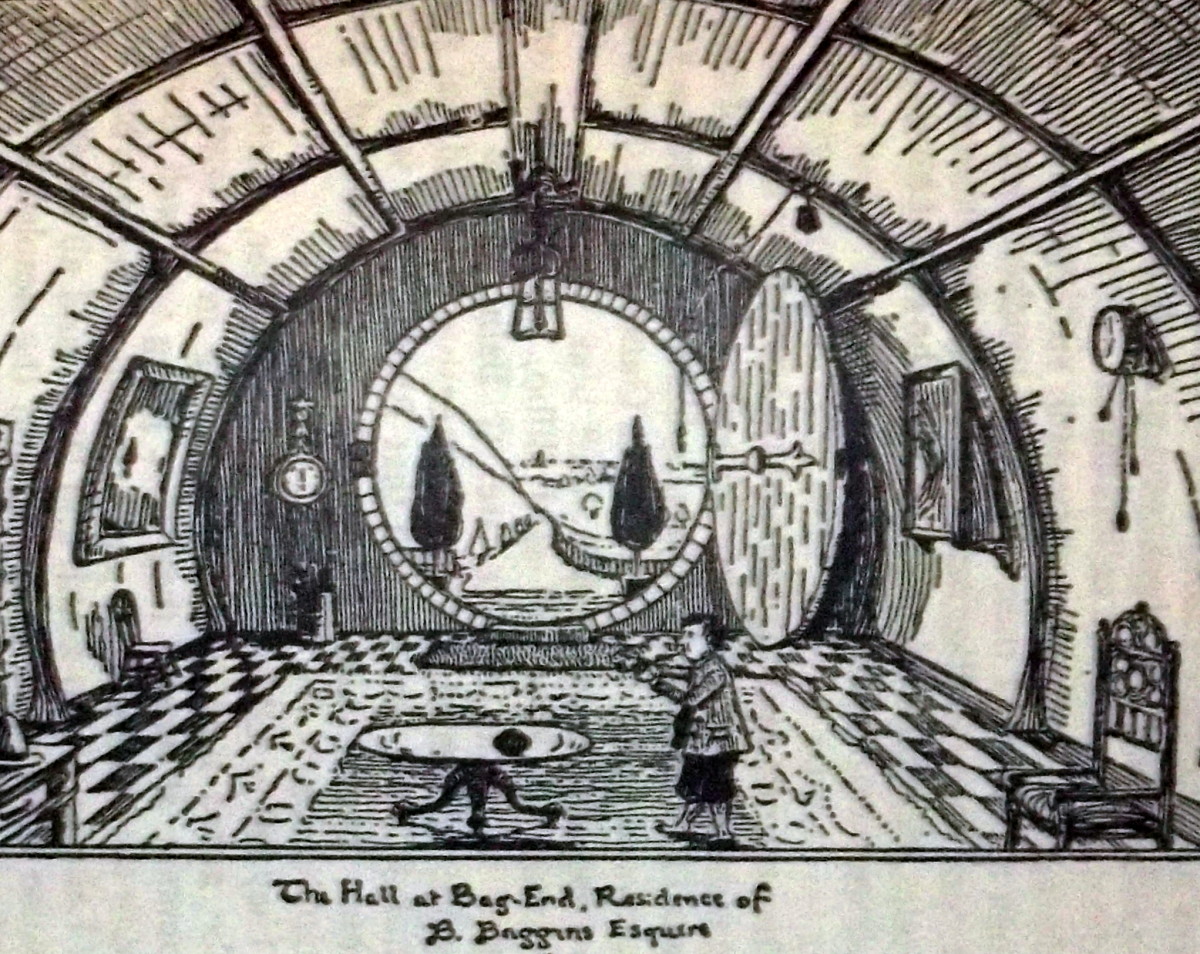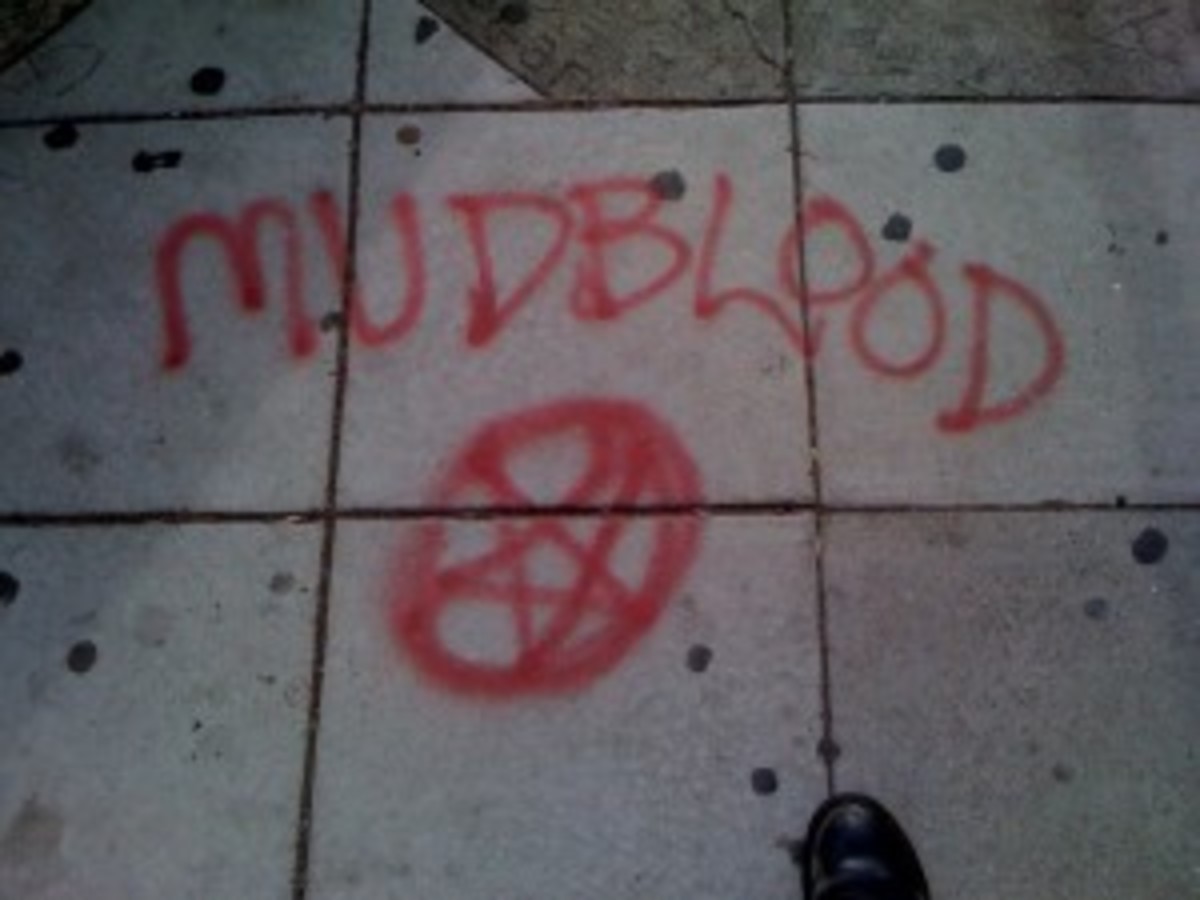Lord of the Rings' Lost Characters
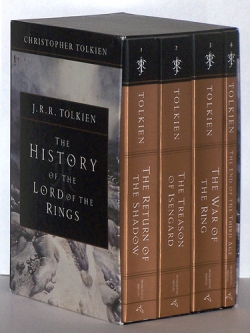
The History of Lord of the Rings
J.R.R. Tolkien's epic The Lord of the Rings is so well-known that it's hard to believe Aragorn was once a hobbit with wooden feet, Treebeard was an evil giant, and Frodo was named Bingo.
Most fans of The Lord of the Rings will be content just reading the books (or watching the films) and letting the story speak for itself.
However, for some of us who especially enjoy the lore and history of Tolkien's Middle-earth, it's fun to dig deeper. Thanks Christopher Tolkien's meticulous editing and arrangement of his father's unpublished writings, we can now understand the story more fully through rough drafts, notes, and scraps that landed on the cutting-room floor.
On this page, I'd like to share some of my favorite "lost LOTR" discoveries. I've been rereading The History of the Lord of the Rings -- a set of books in which Christopher reproduces, edits, and comments on his father's rough drafts for LOTR.
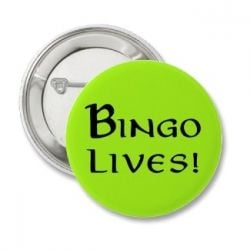
Odo and Bingo Bolger-Baggins
Early Images of Hobbits in Lord of the Rings
"Bingo Lives!" parody of popular "Frodo Lives!" buttons... an in-joke true Tolkien fans will get!
The Hobbit was composed as a casual children's fairy tale, originally unconnected with Tolkien's richer, more mythological fantasy world of Middle-earth. That world had been the setting for grand epics, legends and histories which he had little hope of publishing. When he started a sequel to The Hobbit, he meant to write a new story centering around hobbits in the same light-hearted style as The Hobbit. Only later did epic overtake them.Which hobbits? There is a confusing cast of them in LOTR's early drafts. Merry first appears as "Marmaduke," "Frodo" is at first the name of the Pippin-character (sort of), "Bingo Bolger-Baggins" son of Bilbo is the original hero of the tale, and one "Odo Bolger" who eventually merges into other characters plays a tremendously important role. There is an entire lost plot thread in which Odo risks his life as Bingo's double, rides off with Gandalf to Weathertop, and is (perhaps) captured by Black Riders!
Bingo, forerunner of Frodo Baggins, is a much more playful figure, partly because Gandalf advises him to treat the Ring "lightheartedly" to help him resist its evil power. Here is a typical "Bingo" scene:
'I hope Bingo has not got locked up in the cupboard, or something,' said Odo. 'He's late: it's after six.'
'There's no need to worry,' said Frodo. 'He'll turn up when he thinks fit. He may have thought of some last irresistible joke, or something: he's very Brandybucksome. But he'll come all right; quite reliable in the long run is Uncle Bingo.'
There was a chuckle behind him. 'I'm glad to hear it,' said Bingo suddenly becoming visible; 'for this is going to be a very Long Run Well, you fellows, are you quite ready to depart?'
'It's not fair sneaking up with that ring on,' said Odo. 'One day you will hear what I think of you, and you won't be glad.'
'I know already,' said Bingo laughing, 'and yet I remain quite cheerful. Where's my pack and stick?'
Bingo also uses the ring to play tricks on Farmer Maggot, picking up and drinking his tankard of ale while invisible, then running off with his hat!
Some traces of this early, "fairy tale" style appear in the opening chapters of The Lord of the Rings in its published form, such as the fox who pauses to marvel at the party of hobbits camping in the woods.
Trotter the Hobbit
AKA Peregrin Boffin
There is one other very important hobbit in the early manuscripts of The Lord of the Rings: Trotter, aka Peregrin Boffin. He is not Pippin, but an earlier version of Strider:
Suddenly Bingo noticed that a queer-looking, brown-faced hobbit, sitting in the shadows behind the others, was also listening intently. He had an enormous mug (more like a jug) in front of him, and was smoking a broken-stemmed pipe right under his rather long nose. He was dressed in dark rough brown cloth, and had a hood on, in spite of the warmth, -- and, very remarkably, he had wooden shoes!
[...]
Presently the Ranger, with a click and a jerk of his hand, invited Bingo to come over to him; and as Bingo sat down beside him he threw back his hood, showing a long shaggy head of hair, some of which hung over his forehead. But it did not hide a pair of keen dark eyes. 'I'm Trotter,' he said in a low voice.
Over and over in the early drafts, Tolkien keeps asking himself in jotted notes: Who is Trotter? This question would vex him right into the Mines of Moria.
From the start, Trotter was a grim, seasoned Ranger who was older than he looked, set apart from the other Rangers --originally because the rest were Men. Was Trotter actually Bilbo in disguise, which I think is hinted at in some early drafts? Or, according to one rewrite, was Trotter/Peregrin one of those other Hobbits that Gandalf sent off on an adventure? Even in this embryonic stage of the tale, Trotter had helped Gandalf hunt Gollum, but had been captured by the Black Riders and tortured in Mordor. Trotter's wooden shoes (or feet, in some versions) conceal his injuries from this harrowing experience. While Trotter vanished along with his wooden shoes, a hint of Trotter's trauma remains when Aragorn first tells Frodo of the horror of the Black Riders in the published tale:
'They will come on you in the wild, in some dark place where there is no help. Do you wish them to find you? They are terrible!'
The hobbits looked at him [Aragorn], and saw with surprise that his face was drawn as if with pain, and his hands clenched the arm of his chair... For a while he sat with unseeing eyes as if walking in distant memory or listening to sounds in the Night far awy.
'There!' he cried after a moment, drawing his hand across his brow. 'Perhaps I know more about these pursuers than you do. You fear them, but you do not fear them enough, yet.'
-- "Strider", The Fellowship of the Ring
Aragorn mentions a few times that he hunted Gollum as far as Morgul Vale, and also through Moria: the memories of both journeys obviously trouble him. Here and elsewhere, little hints of earlier plots often linger like vestigial organs in the finished The Lord of the Rings.
Gandalf Besieged at Emyn Beraid
The Elf-Towers West of the Shire
There are places in Middle-earth where the printed story never ventured. One such place is the Tower Hills west of the Shire, where stood three Elf-towers. They appear in early drafts even before Tolkien had an inkling of Minas Tirith or of Orthanc, but had no place in the finished tale and, sadly, were dropped.
We get a glimpse of them in a rejected early draft where Tolkien was trying to work out why Gandalf did not accompany Frodo from the Shire. Even in The Hobbit, Gandalf was always problematic; if he was around, the party could not get into half as many scrapes. So Tolkien was always stashing him somewhere: in Isengard, in Rohan drumming up backup troops, in Minas Tirith dealing with Denethor, etc. Before Saruman was invented, Tolkien toyed with the idea of having Treebeard the evil giant capture Gandalf!
Yet even before that, we have a unique glimpse of Gandalf at Emyn Beraid, trying to lure the Riders from Frodo's trail. Frodo dreams of this episode:
He found himself on a dark heath. Looking up, he saw before him a tall white tower, standing alone upon a high ridge. Beyond it the sky was pale, and there came a murmur like the voices of the Great Sea which he had never heard nor beheld, save in other dreams. In the topmost chamber of the tower there shone dimly a blue light.
Suddenly he found that he had drawn near and the tower loomed high above him. About its feet there was a wall of faintly shining stones, and outside the wall sat silent watchers: black-robed figures on black horses, gazing at the gate of the tower without moving, as if they had sat there forever.
It's an eerie, creepy moment forever lost. I love how The History of The Lord of the Rings often takes us to places or moments that had no dramatic role in the finished tale, but really existed.
Minas Tirith's and Boromir's Betrayals
The Heirs of Elendil Rejected By Their Own People
The story of Aragorn's lineage, of Elendil and the Last Alliance, and of Gondor (the "Land of Ond") emerges very gradually. The first draft of the Council of Elrond establishes the character of Aragorn and his backstory with a surprising twist:
'And the Men of Minas Tirith drove out my fathers,' said Aragorn. 'Is not that remembered, Boromir? The men of that town have never ceased to wage war on Sauron, but they have listened not seldom to counsels that came from him. In the days of Valandur [son of Isildur in this version] they murmured against the Men of the West, and rose against them, and when they came back from battle with Sauron they refused them entry into the city. Then Valandur broke his sword before the city gates and went away north, and for long the heirs of Elendil dwelt at Osforod the Northburg in slowly waning glory and darkening days. But all the Northland has now long been waste; and all that are left of Elendil's folk few.
'What do the men of Minas Tirith want with me -- to return to aid [them] in the war and then reject me at the gates again?'
This is astounding. In the later, published history of The Lord of the Rings, mangled by the films, the kingdom of Gondor was ruled by Elendil's heirs for thousands of years in the Third Age before the line failed; another "northern line" founded by Isildur also lasted for many centuries. But in the original story, the heirs of Elendil are betrayed and driven out by their own people after winning the War of the Last Alliance against Sauron; so for thousands of years Gondor has had no king. There is no notion of a steward waiting for the king's return.
In Return of the King, there are vestiges of this old story in the tale of the Dead Army of Dunharrow, the Oathbreakers who rebelled against Isildur.
Also, in the earliest conceptions of the story of The Lord of the Rings Boromir is not killed after trying to take the Ring from Frodo and causing him to flee. When the party cannot find Frodo, Boromir and Aragorn go on to relieve Minas Tirith of its siege. There they become rivals. Boromir eventually seeks Saruman's assistance to help him defeat Aragorn, and Aragorn must in the end kill Boromir in self-defense.
In The Lord of the Rings, as so often, there are hints of rejected plot lines: Gandalf warns Denethor that Boromir would have fallen to the Ring's evil power had he not died honorably when he did.
The Story Foreseen -- And Unforeseen
An Epic That Wrote Itself
I could go on, but that's probably enough to whet the appetite of die-hard fans of The Lord of the Rings.
It's astounding what's in the story from the start: The Lord of the Ring trying to find and collect the rings he had loaned out, the hunt for Gollum, Gollum's guidance of Frodo and his role in the disposal of the Ring at the "Fiery Mountain," Bilbo's birthday party, the Scouring of the Shire, Bombadil, the Barrow-wights and the Black Riders, Treebeard (at first a villain), Gandalf's fall in Moria and his return. Sam, Boromir and Gimli also enter into the story fairly early, and there are vague references to Rohan and the horse-lords.
It's even more astounding what grew and evolved later: Aragorn's story, Lothlóorien and Galadriel, Rohan vs. Saruman, Minas Tirith and Denethor, Faramir, the Silmarils, and in general the much expanded saga past the Misty Mountains. Arwen herself did not occur to Tolkien until he had almost finished writing the book; then he had to try to insert her retroactively.
Yet always it seems as if the story already existed, and Tolkien was just trying to discover it; he seems more like a prophet or shaman possessed by a vision than a craftsman devising a pleasing tale. But make no mistake: this tale took a decade to write, and was achieved only by long labors. I doubt there has been anything like it since the sagas, romances, and epics of medieval and ancient times.
The History of the Lord of the Rings - In Four Volumes -- But Which Four?
Just to be confusing, The History of the Lord of the Rings exists in two versions: the four-volume paperback set, which is missing a few frontispiece illustrations reproducing some of Tolkien's rough sketches, and a hardback edition whose alternate fourth volume, Sauron Defeated, includes everything in The End of the Third Age, then adds an unpublished work about the Second Age, Sauron and the Fall of Númenor.
Poll: The History of The Lord of the Rings - Have You Read It?
Have you ever read The History of the Lord of the Rings?
© 2011 tinw
